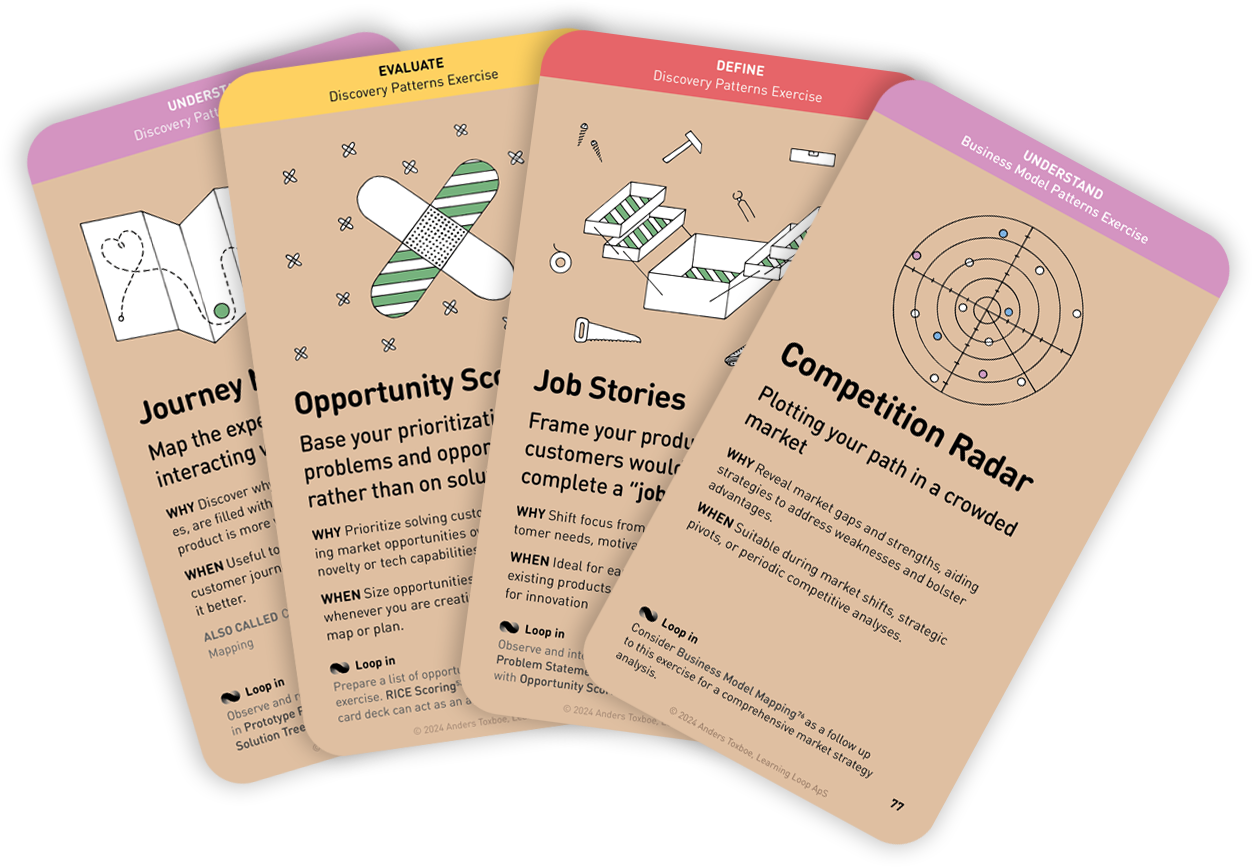
Why: Pinpointing target behaviors aligned with product goals ensures focused and effective design efforts
When: Early in new initiatives, this helps avoid costly mistakes and wasted resources on non-contributory efforts
This exercise is helpful to identify and select the target behaviors that a product aims to influence or change. It allows designers to identify which behaviors should be targeted for behavior change in their designs to ensure that the future product resonates with users and prompts desired actions. It helps honing in on the behaviors that are most crucial to the product’s success, preventing dispersion of focus and resources on less impactful initiatives.
The exercise seeks to produce clarity and focus needed to create products that are not only aligned with user needs and behaviors but also potent in bringing about desired behavioral changes, leading to more successful and impactful products in the market.
WHY: Selecting the right target behaviors is crucial when designing a product that aims to change or influence those behaviors. By pinpointing exactly which behaviors are most aligned with your product’s goals you will ensure that your design and development efforts are both targeted and effective.
Instructions for running this play
- Understand your Goals
Define or explain the measurable goals your product aims to achieve. Discuss how the change of user behavior is tied to these goals. - List potential target behaviors
Brainstorm a list of behaviors that could potentially be targeted to achieve the product goals. Write each behavior on a separate sticky note. Be as specific as possible. As a bonus, think about how you can measure or observe each behavior. - Frame questions for evaluation
Consider asking the following questions to assess the relevance of each behavior to your product goals.- Which behaviors are most tied to your measurable product goal?
- If you could only focus on one or two behaviors, which would give the biggest lift?
- Which Persuasive Patterns could have the largest impact?
- Do you have access to people who exhibit this behavior?
- Does your user group have control over the outcome?
- Can you influence this behavior within your toolkit’s (web application, physical space, etc.) constraints?
- Does the behavior fit the context of the product (e.g., mobile app, desktop, etc.)?
- Score potential target behaviors
Collaborate to score behaviors on the following criteria from 0-10:- Impact of behavior change
- Ease of change
- Ease of measurement score
Multiply the score for each behavior for a total score. Choose more fitting criteria, if relevant. Use the question framed in Step 3 for inspiration.
| Potential target behaviors | Impact of behavior change score | Ease of change score | Ease of measurement score | Total score |
|---|---|---|---|---|
| … | ||||
| … | ||||
| … |
- Discuss behaviors that scored highly and why they may be important to include in your product design.
- Select the target behaviors
Based on the scores and discussions, select the target behaviors for your product. Consider any “bonus behaviors” that may come alongside the main target behaviors.
A collection of workshop exercises that will help you ditch dull meetings and facilitate with confidence. It will help you master the design process and have more productive time with your team. The card deck will be ready for purchase in the end of 2026 and is now undergoing rigorous testing.
Reserve your deck!